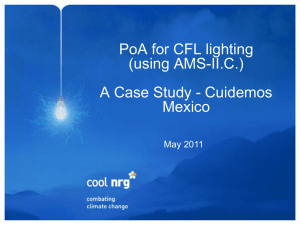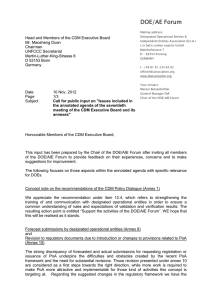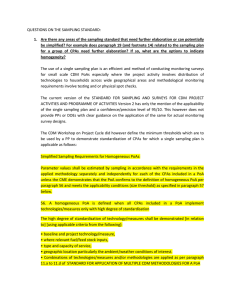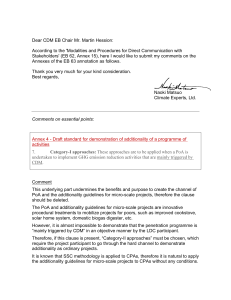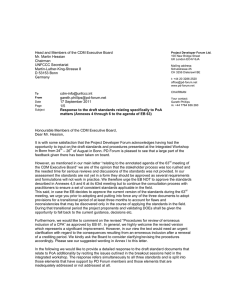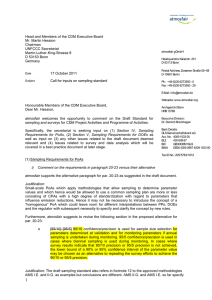Document 11119138
advertisement
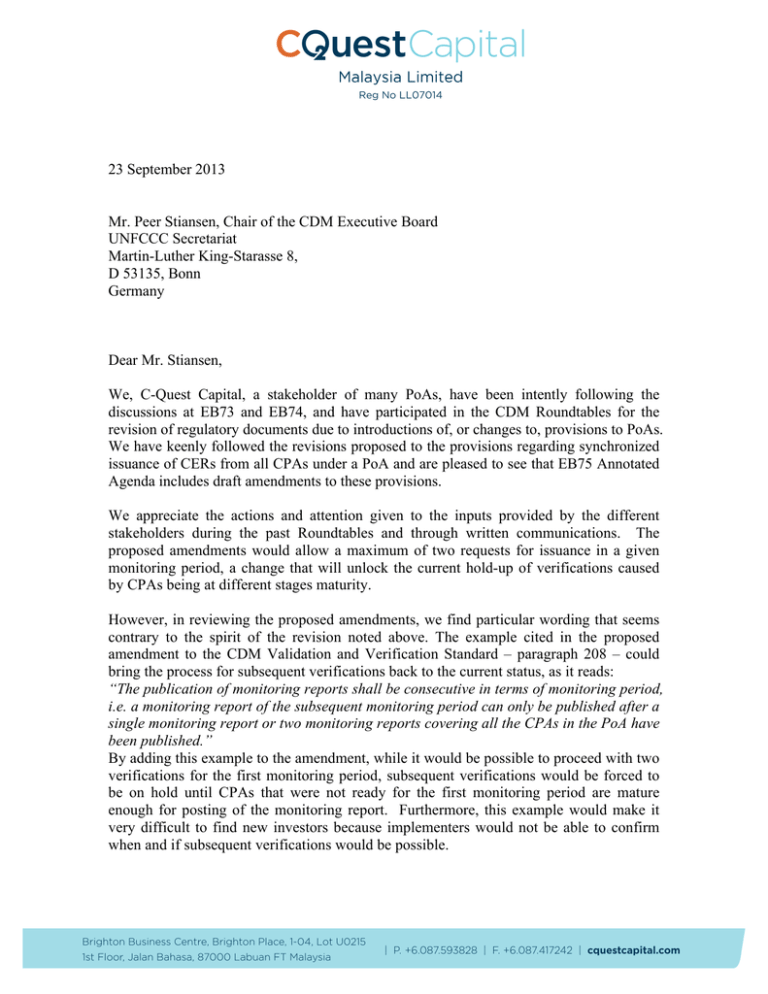
23 September 2013 Mr. Peer Stiansen, Chair of the CDM Executive Board UNFCCC Secretariat Martin-Luther King-Starasse 8, D 53135, Bonn Germany Dear Mr. Stiansen, We, C-Quest Capital, a stakeholder of many PoAs, have been intently following the discussions at EB73 and EB74, and have participated in the CDM Roundtables for the revision of regulatory documents due to introductions of, or changes to, provisions to PoAs. We have keenly followed the revisions proposed to the provisions regarding synchronized issuance of CERs from all CPAs under a PoA and are pleased to see that EB75 Annotated Agenda includes draft amendments to these provisions. We appreciate the actions and attention given to the inputs provided by the different stakeholders during the past Roundtables and through written communications. The proposed amendments would allow a maximum of two requests for issuance in a given monitoring period, a change that will unlock the current hold-up of verifications caused by CPAs being at different stages maturity. However, in reviewing the proposed amendments, we find particular wording that seems contrary to the spirit of the revision noted above. The example cited in the proposed amendment to the CDM Validation and Verification Standard – paragraph 208 – could bring the process for subsequent verifications back to the current status, as it reads: “The publication of monitoring reports shall be consecutive in terms of monitoring period, i.e. a monitoring report of the subsequent monitoring period can only be published after a single monitoring report or two monitoring reports covering all the CPAs in the PoA have been published.” By adding this example to the amendment, while it would be possible to proceed with two verifications for the first monitoring period, subsequent verifications would be forced to be on hold until CPAs that were not ready for the first monitoring period are mature enough for posting of the monitoring report. Furthermore, this example would make it very difficult to find new investors because implementers would not be able to confirm when and if subsequent verifications would be possible. Therefore, we respectfully recommend deleting the example cited in the proposed amendment to the CDM Validation and Verification Standard – paragraph 208. I would also like to take this opportunity to express our appreciation for the work of the CDM Secretariat and the Executive Board you chair. Kind regards, Ken Newcombe Director

